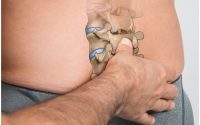Fascia and the Vagus Nerve: Understanding Their Interplay in Health and Therapy
Summarized from the Podcast by Til Lucas with Fabiana Silva.
The human body operates as an intricate web of systems that continuously interact with one another. Among the most compelling of these interactions is the relationship between the vagus nerve—the primary conduit of the parasympathetic nervous system—and the fascia, the connective tissue network that envelops and interlinks all structures in the body. Emerging research and clinical insights are shedding light on how this relationship influences inflammation, psychological regulation, and chronic health conditions, opening new doors for therapeutic interventions.
The Vagus Nerve: A Central Regulator of Health
The vagus nerve is the tenth cranial nerve and the major component of the parasympathetic branch of the autonomic nervous system. It extends from the brainstem through the neck and thorax down to the abdomen, innervating organs such as the heart, lungs, liver, and digestive tract. Through its afferent fibers, it constantly relays information from the body to the brain; through efferent signals, it modulates various organ functions including heart rate, digestion, immune responses, and even emotional regulation.
Research has highlighted the vagus nerve’s dual role in initiating and modulating inflammation. It can promote recovery through anti-inflammatory pathways and influence the balance between pro- and anti-inflammatory cytokines—key players in chronic conditions. Additionally, vagal activity has been linked to psychological well-being, with low vagal tone commonly associated with depression, anxiety, sleep disturbances, and other stress-related disorders.
Fascia: The Structural and Sensory Interface
Traditionally viewed as a passive connective tissue, fascia is now recognized as an active and dynamic system with its own sensory capabilities. It serves both as a mechanical scaffold and a communication medium, rich in sensory nerve endings that continuously inform the central nervous system about the body’s internal state—a process known as interoception.
Fascia plays a critical role in the structural support of nerves. The vagus nerve, in particular, must traverse multiple fascial planes and sheaths as it descends through the body. The health of these tissues can significantly impact the nerve’s function. Scarring, fibrosis, or adhesions in the fascia—whether due to surgery, trauma, or chronic tension—can impair nerve mobility and disrupt axoplasmic flow, the transport of essential molecules along nerve fibers. This mechanical interference may result in reduced nerve conduction, inflammation, or even pain.
Moreover, fascia itself is a highly innervated organ. It sends a constant stream of sensory information to the brain, which in turn shapes autonomic responses, including those mediated by the vagus nerve. When fascial tissue is dysregulated or dysfunctional, the afferent signals reaching the brain may be distorted, resulting in maladaptive physiological responses.
Therapeutic Implications: Manual Therapy and Vagal Regulation
One of the most exciting clinical developments is the application of manual therapy techniques to improve vagal function via fascial pathways. By targeting areas where the vagus nerve is more accessible—such as the suboccipital region, the sternocleidomastoid muscle, or the auricular branch near the ear—therapists can potentially influence vagal tone. Techniques such as craniosacral therapy, suboccipital release, and myofascial manipulation have been associated with reductions in stress hormones like cortisol and increases in anti-inflammatory markers.
Complementing manual techniques is the use of transcutaneous vagus nerve stimulation (tVNS), a non-invasive method that applies electrical impulses to skin areas rich in vagal innervation, such as the ear or neck. This technique, already approved for the treatment of depression, epilepsy, and stroke recovery, can be safely integrated into physiotherapy sessions. It has shown promise in supporting patients with chronic pain, digestive issues, fatigue, and post-COVID inflammatory syndromes.
Additionally, practices like deep breathing, mindfulness-based movement, and somatic awareness exercises have been shown to enhance vagal tone by fostering a sense of safety and internal engagement—particularly beneficial for individuals who may be disconnected from their bodily experience due to trauma or chronic illness.
Implications for Therapists
For manual therapists, physiotherapists, massage therapists, osteopaths, and other bodyworkers, the emerging understanding of the fascia-vagus axis presents a powerful opportunity to enhance therapeutic outcomes through an integrative lens.
- Reframing Fascia as Functional: Fascia is no longer viewed as mere passive tissue. Its sensory and regulatory roles mean that touch-based therapies are not just mechanical—they also engage the nervous system, especially the vagus nerve, with far-reaching effects on inflammation, mood, digestion, and systemic balance.
- Precision in Practice: Techniques targeting vagal pathways—such as suboccipital release or auricular work—can be integrated into treatment for clients with stress-related, digestive, or chronic pain conditions. Understanding fascial continuity along the vagus nerve’s path may help therapists choose more strategic intervention points.
- Holistic Client Assessment: The interconnected nature of fascia and vagal tone supports a whole-person assessment. Clients presenting with symptoms as diverse as reflux, migraines, anxiety, or low back pain may benefit from vagus-aware fascial work, especially when conventional treatments fall short.
- Non-Invasive Interventions: Therapists can consider non-invasive adjuncts like tVNS devices, breathwork, and guided movement to reinforce manual work and empower clients with self-regulation tools.
- The Therapeutic Relationship as a Regulator: Beyond technique, the sense of safety and co-regulation offered by the therapist is itself a vagus-activating intervention. This underscores the importance of the therapeutic alliance, empathy, and context—elements often missed in clinical trials but essential in practice.
- Clinical Innovation and Research: Therapists are encouraged to contribute to and draw from emerging pragmatic research that values contextual richness over reductionism. By doing so, they can validate the complexity of manual therapy while participating in a growing evidence base.
A Holistic Model for Modern Healthcare
Understanding the interdependence of fascia and the vagus nerve provides a powerful framework for addressing complex, chronic conditions that often elude conventional treatment. From inflammation and pain to mood and digestive function, this integrated approach places emphasis not only on structural health but also on sensory integration, emotional regulation, and autonomic balance.
At the heart of this model lies a simple yet profound idea: the body is a network of relationships—between tissues, systems, and experiences. In that light, therapies that honor and work within this network may be among the most effective tools we have.

